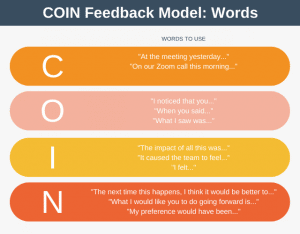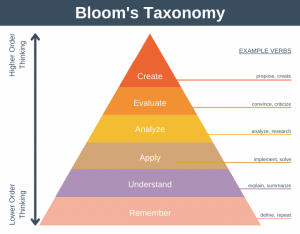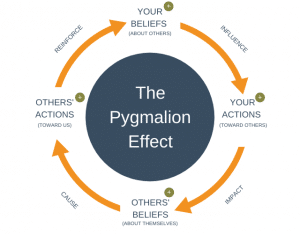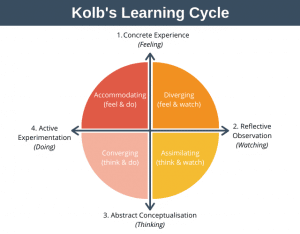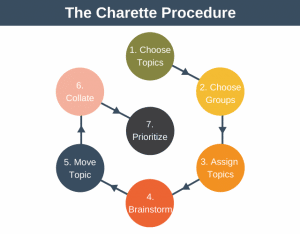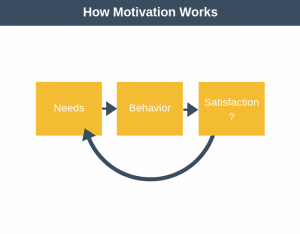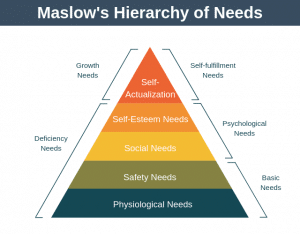The Theory of Planned Behavior shows the various factors that can influence our behavior. The theory states that your intentions are the best predictor of your behavior.
If you believe being punctual is a good thing, then you are more likely to make an effort to arrive at meetings on time. If you believe that meetings take up too much of your valuable work time, then you will be less inclined to make a point of arriving on time.
What is the Theory of Planned Behavior?
The theory states that your behavior is a function of three factors: attitudes, subjective norms, and perceived behavioral control.
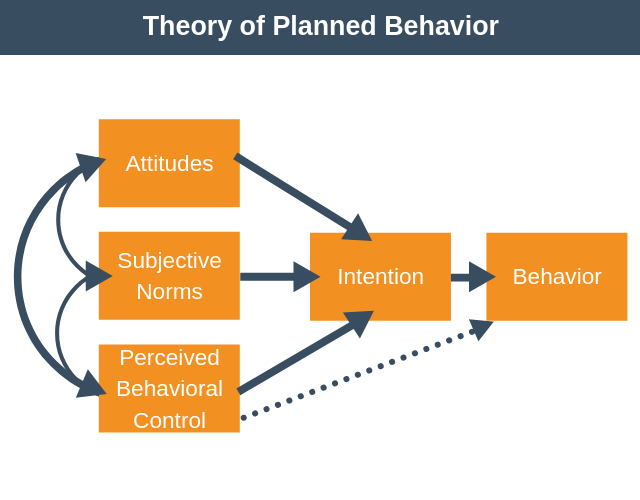
Let’s take a closer look at the model and how it works.
1. Attitudes
Your attitude towards a behavior will affect how likely you are to perform that behavior.
If you believe that the behavior will make a positive difference in your life, then it’s more likely that you will perform the behavior.
Let’s consider the likelihood that you will take a new course to improve your skills.
If you believe the course improves the chances of getting a promotion, then you are likely to have a positive evaluation of the behavior (taking the course). If you think that the course won’t lead to a promotion and would also take a lot of your spare time, then you’re more likely to have a negative evaluation of the course.
In short, attitude answers the question, “What do I think”?
2. Subjective Norms
Subjective norms look at what others in your social circle, the people that you interact with, think about the behavior. Your behavior is to some extent shaped by what others believe, particularly those close to you.
If people at your workplace took the course (the behavior) you are considering and found it beneficial, then you are more likely to want to take the course.
Note that, just because others close to you have particular attitudes and beliefs, it doesn’t mean you will always view the world in the same way.
In short, subjective norms answers the question, “What do others think”?
3. Perceived Behavioral Controls
Perceived behavioral controls look at whether you believe you have the tools or the means required to exhibit the behavior.
If you think that you’re not clever enough to take the course then you’re less likely to take it. Similarly, if you believe that you can’t afford the course then you’ll be less likely to sign up for it.
In short, perceived behavioral controls answers the question, “Can I do it”?
4. Intentions
So far we’ve stated that your behavior is a function of your attitudes, subjective norms, and perceived behavioral controls. It is also a function of your intentions, which you can think of as being your desire to perform the behavior.
Imagine that you have some desire to take the course but you haven’t actually signed up for it yet. Why not? It’s because there is a gap between your intention and your behavior.
One way to overcome this gap is by making a plan, for example, simply planning out what action you will take and when. In psychological parlance, this plan goes by the name of an implementation intention.
Background
Planned Behavior Theory was proposed by Icek Ajzen and improves on the theory of Reasoned Action, which he also developed in 1980 along with Martin Fishbein.
The Theory of Reasoned Action meant that if someone was to evaluate a behavior with a positive attitude, and think that significant others like friends, peers, and family want them to perform a behavior, there is a higher intention or motivation to carry out the behavior.
Ajzen improved the Theory of Reasoned Action by adding a third influencing factor called Perceived Behavioral Control, which improved the predictability of the model. Perceived Behavioral Control evolved from Self Efficacy Theory which addresses an individual’s motivations.
Theory of Planned Behavior Example
A retail store has just launched its online store. While the intention is that people move from buying in-store to online, nobody is behaving this way. Let’s find out why.
A survey of existing customers, shaped by the Theory of Planned Behavior, is used to understand customer beliefs about online shopping. By asking a set of open-ended questions, the relevant barriers and attitudes become clear.
1. Attitudes
In the survey, people share their attitudes towards online shopping. Some customers understand the convenience of shopping online, while others want to buy in-store rather than wait for delivery. Many of the store’s customers are older and believe it is not safe to use a credit card online.
2. Subjective Norms
Respondents say that their friends and family who have tried shopping online, have not had problems with making a purchase. Respondents noted that their younger friends actually prefer to buy online.
3. Perceived Behavioral Control
When asked about barriers to shopping online, many older customers shared that they find technology confusing, and this is preventing them from making a purchase. The survey also threw up some other issues:
- Some people like to touch and inspect products before they buy them.
- Most people were not aware that it was possible to buy the store’s products online.
4. Intention
In the survey, many customers highlighted that the would like to use the online store but hadn’t done so yet simply because they found it all a little overwhelming and daunting.
Example Conclusions
Now the factors that influence customers shopping online are understood, what can be done about it?
To address the issues raise the store could:
- Customers who create an instore account are able to register their credit card details. When making online orders, they no longer have to enter credit card details.
- To help build awareness of the online store, in-store checkout clerks remind customers they can buy products online.
- To bridge the intention gap where customers want to use the online store but find it overwhelming, the store offers people to have someone in-store walk them through the whole online process for their first online purchase.
By implementing actions to address all of the factors that influence behavior according to the Theory of Planned Behavior, the store should begin to see a noticeable uptake in people using its online store.
Although this example examines the theory from a business perspective, the model is commonly used in public health planning, for example, such as where you are endeavoring to encourage the population to eat a healthier diet.
Advantages and Disadvantages
There are a number of advantages and disadvantages associated with the Theory of Planned Behavior.
Advantages
- The model is useful for making predictions. By considering the variables as inputs into the model, this provides more reliability in the prediction of behavior, particularly over the Theory of Reasoned Action.
- Before risking investment in change, the model can be used to gather data to help you identify the biggest barriers to changing behavior.
Disadvantages
- There are situations where the model fails. While there may be a positive behavioral intention, the model doesn’t account for the gap between intention and behavior. You can extend the model with implementation intentions to address this problem.
- The model does not include other behavioral factors like emotions. Emotions can impact our perception and our beliefs and tendency to take action.
- The model is great for finding the relationship of attitudes to behavioral intentions. It doesn’t address how to determine actions that result in changing behavior.
Summary
The Theory of Planned Behavior allows organizations to predict the likelihood that an individual will hold an intention to carry out a specific behavior.
It provides an understanding of the factors that lead to a particular behavioral intention.
If you’re managing a team, you can use the model to assess the likelihood that your team members will behave a certain way. You can also use it to assess the likelihood that your customers will act in a certain way.
